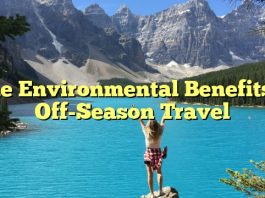Exploring National Parks: Sustainable Practices for Nature Lovers
Understanding the Importance of National Parks
National parks play a crucial role in preserving the natural beauty of our planet. They provide a sanctuary for wildlife, protect biodiversity, and offer a glimpse into the ecosystems that sustain life. For nature lovers, these parks offer a unique opportunity to connect with nature, learn about the environment, and appreciate the beauty of the natural world.
The Role of National Parks in Conservation
National parks are not just recreational areas; they are vital for conservation efforts. By protecting large areas of land from development and exploitation, these parks help maintain ecosystems and provide a refuge for endangered species. They also serve as research sites where scientists can study ecosystems, wildlife behavior, and the impacts of climate change. This research is crucial for developing strategies to mitigate environmental issues.
Economic and Social Impact
Aside from their environmental significance, national parks also have a profound economic and social impact. They attract millions of visitors each year, contributing to local economies through tourism. Park fees, tours, and local businesses catering to tourists provide significant revenue. Moreover, national parks often foster a sense of pride and identity for local communities, preserving cultural heritage and history.
Sustainable Practices for Visiting National Parks
While visiting national parks, it is vital for nature lovers to practice sustainability. Ensuring minimal impact on the environment enhances conservation efforts and maintains the park’s integrity for future generations to enjoy.
Planning Your Trip
Before heading to a national park, spend some time researching the area. Learn about its rules and regulations, wildlife, and specific sustainability practices. Pre-planning allows you to understand the significance of the park better and ensures you adhere to its conservation efforts.
Choosing the Right Time
Consider visiting parks during their off-peak seasons. This not only provides a more peaceful experience but also helps reduce the environmental strain caused by large crowds during peak times. By avoiding the busiest periods, you help prevent overcrowding and reduce the impact on wildlife and natural resources.
Traveling Responsibly
Traveling to national parks can have a significant environmental impact due to transportation emissions. Opt for eco-friendly travel methods whenever possible.
Sustainable Transportation Options
Consider using public transportation, carpooling with other travelers, or renting a hybrid or electric vehicle. Some parks also offer shuttle services that reduce the number of vehicles within the park. These options decrease carbon emissions and your overall environmental footprint.
Accommodation Choices
Choosing accommodations that emphasize sustainability can also have a significant impact. Many parks and nearby areas offer eco-friendly lodging options.
Eco-Friendly Lodges and Campsites
Look for accommodations that are certified by environmental organizations, like those with LEED certification or Green Key eco-labels. Alternatively, consider camping, which, when done responsibly, can have a minimal environmental impact. Make sure to adhere to any local guidelines to protect natural resources and wildlife.
Practicing Leave No Trace Principles
One of the most effective ways nature lovers can contribute to sustainability in national parks is by practicing Leave No Trace (LNT) principles. These guidelines encourage minimal impact on the environment and help visitors maintain the natural beauty of the parks.
Plan Ahead and Prepare
Start your visit on the right foot by planning and preparing your trip. Ensure that you have all necessary permits, understand park regulations, and have prepared for the specific conditions you’ll encounter. This preparation helps prevent damage caused by unexpected situations.
Travel and Camp on Durable Surfaces
Stick to marked trails and designated campsites to avoid harming vegetation and soil. Straying off-trail or setting up camp on fragile ground can lead to erosion and habitat destruction. Always choose durable surfaces like rock, sand, or gravel when you need to go off-path.
Dispose of Waste Properly
“Pack it in, pack it out” should be your mantra when visiting national parks. Carry all trash, leftover food, and personal items out of the park and dispose of them appropriately. By doing this, you help ensure the park remains clean and inviting for future visitors and wildlife.
Recycling and Composting
Some parks have recycling and composting facilities, so make use of them when available. Separating recyclable materials and compostables can significantly reduce the amount you have to pack out. Additionally, consider reducing waste beforehand by minimizing packaging and bringing reusable items.
Leave What You Find
Avoid taking natural items such as rocks, plants, or even historical artifacts. Leave these items so that other visitors can enjoy them, and to maintain the natural balance of the ecosystem. By leaving what you find, you help preserve the park’s natural and cultural heritage.
Minimize Campfire Impact
Fires can cause lasting damage to the environment and are often the source of wildfires. Many parks have strict regulations about where and when fires can be built, so always adhere to these rules. Use established fire rings and keep fires small. Opt for a portable stove instead of a campfire when possible, as it reduces fire risk and impact on the area.
Firewood Considerations
If campfires are permitted, use only local firewood to prevent the spread of invasive species and diseases. Transporting wood from other areas can introduce harmful pests that threaten local ecosystems.
Respect Wildlife
Maintaining a safe distance from wildlife ensures the health and safety of both you and the animals. Never feed animals, as this can alter their natural behavior and diet, leading to health problems and increased dependency on humans.
Safe Wildlife Viewing Practices
Use binoculars or a zoom lens to observe animals from a safe distance without disturbing them. Pay attention to signs or notices about wildlife safety and adhere to any specific guidelines provided by the park.
Be Considerate of Other Visitors
Remember that national parks are shared spaces. Respect the experience of others by keeping noise levels down and yielding the trail to others when necessary. By being considerate, you help ensure everyone can enjoy the tranquil beauty of the park.
Supporting Park Conservation Efforts
Beyond practicing responsible tourism during your visit, supporting conservation efforts helps sustain national parks and their ecosystems long-term.
Participate in Conservation Programs
Many parks offer volunteer programs or conservation projects that visitors can participate in. Whether it’s helping with trail maintenance, wildlife surveys, or educational outreach, these activities contribute significantly to the park’s sustainability.
Donate to Park Funds
Most national parks operate with limited funding, relying heavily on donations and entrance fees. Consider donating to park funds that support conservation projects, infrastructure improvements, and educational programs. These funds often go directly towards maintaining the park’s ecosystems and visitor facilities.
Support Sustainable Businesses
When purchasing souvenirs or booking tours, choose businesses that are committed to sustainable practices. This support encourages the growth of businesses that prioritize environmental responsibility and demonstrates a demand for sustainable tourism options.
Educating Others: Spreading Awareness
As a nature lover, sharing your knowledge and experience with others can amplify your impact. Encourage sustainable practices within your network and inspire others to appreciate and protect national parks.
Sharing Your Experiences
Use social media platforms or personal blogs to document your visits, focusing on the importance of sustainable practices. Highlight what you’ve learned and how others can follow your example to protect natural spaces.
Creating Engaging Content
Share photos, stories, and tips from your trip, emphasizing the beauty of the park and the significance of preserving it. Engaging content can captivate your audience and motivate them to adopt similar practices.
Organize Educational Events
Arrange workshops or talks in your community to share information about the importance of national parks and sustainable tourism. These events can raise awareness and inspire collective action towards environmental stewardship.
Collaborate with Educational Institutions
Partner with schools or universities to create programs that educate students about environmental conservation and the significance of national parks. Early education on these topics fosters a long-lasting appreciation and commitment to environmental protection.
Advocate for Policy Change
Use your voice to advocate for policies that support conservation and sustainable tourism. Engaging with local and national policymakers can contribute to significant changes in how national parks are managed and preserved.
Supporting Environmental Legislation
Stay informed about environmental legislation and support bills that allocate resources to national parks and protect natural ecosystems. Encourage others to join you in advocating for these initiatives to ensure a collective effort towards sustainability.
By embracing these practices and sharing them with others, you’ll contribute to preserving our national parks for current and future generations, ensuring they remain a sanctuary for wildlife and a source of inspiration for all who visit.




